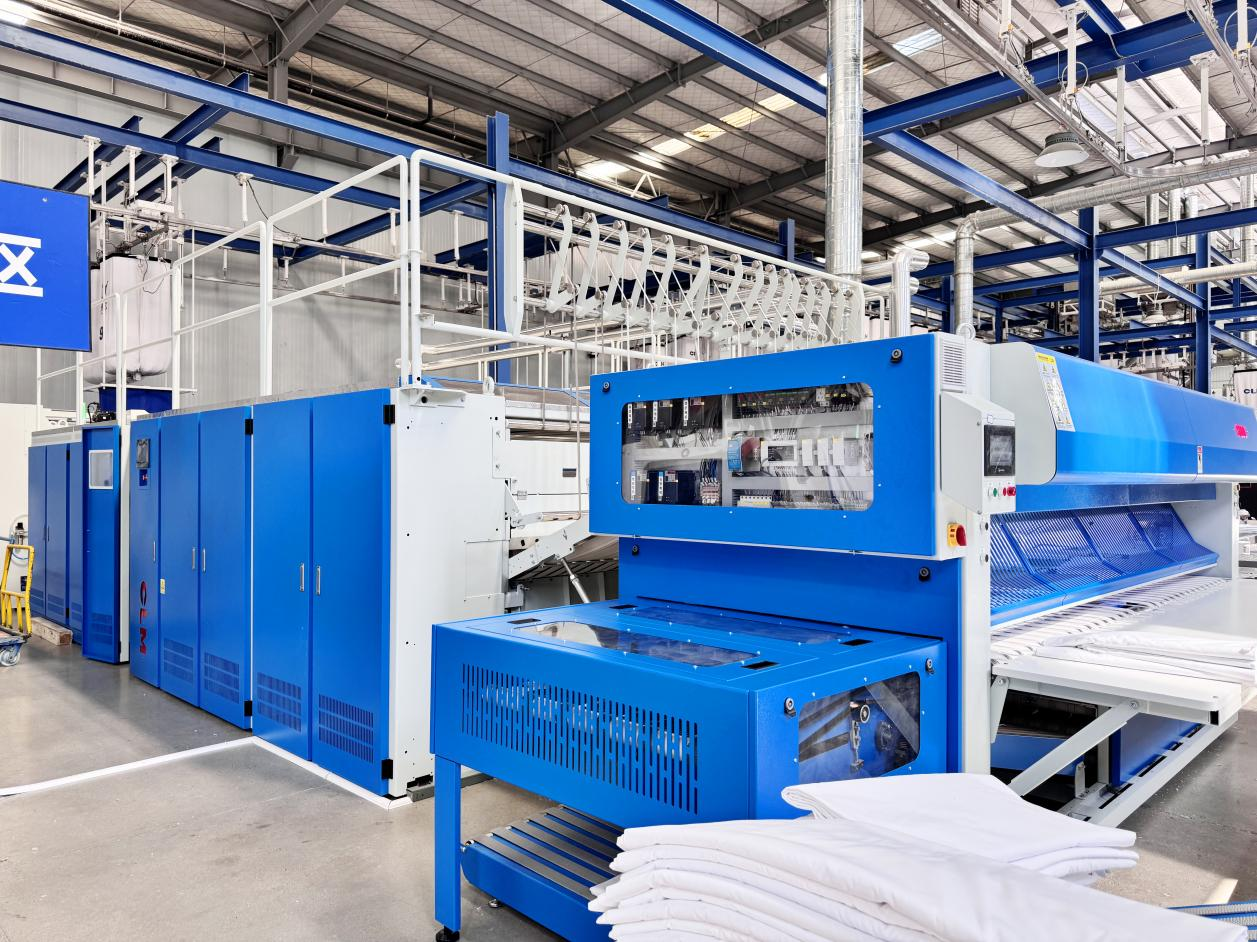In today’s industrial laundry facilities, high-speed ironing lines are important for large-scale linen processing. These systems include a spreading feeder, a high-speed roller ironer, and a folding machine. While all three play key roles, which one actually determines the whole efficiency of the line?
Folder
The folder is located at the end of the ironing line and is responsible for neatly folding the linen at a constant high speed (usually around 60 meters per minute). For consistent performance, it needs to operate smoothly with minimal linen dropouts and a low error rate.
High Speed Roller Ironer
The roller ironer is for drying and ironing. The ironer generally operates below the folding machine’s speed and just above the spreading feeder’s speed to maintain balance in the line, provided adequate steam pressure and ironing surface area.
Here’s the key point: the ironer’s speed is constrained by the folding machine. If the folding unit can’t keep up, the ironer has to slow down, even if it could run faster.
At the beginning of the line, the spreading feeder introduces linens into the system. While its running speed is typically lower than the ironer’s, the real question is: how efficiently does it feed linens, not just how fast it runs?
Take manual feeding, for example. Using a hand fabric feeder, overall throughput depends entirely on the operator’s skill and consistency. Two people feeding the same machine at the same speed can produce very different results.
Now consider automated spreading feeders, where linen is loaded and transferred via coordinated feeding and gripping clamps. This is where design differences between brands truly impact performance.

CLM’s spreading feeder uses a dual-clamp system that alternates from side to side, so there’s always a clamp in position and ready to grab the next piece of linen without delay. Most other brands use a three-clamp design where the center clamp has to move back and forth to catch and release, creating extra motion that slows things down and reduces overall feeding efficiency.
In real-world use, this design difference makes a measurable impact. For example, when operating at the same speed—say, 50 meters per minute—CLM’s high-speed ironing line can process 2 to 3 more bed sheets per minute compared to similar lines using other brands. The reason? Faster, smoother, and more reliable linen feeding.
Conclusion
So, after this analysis, which machine truly determines the efficiency of the entire high-speed ironing line? The answer is clear: the spreading feeder.
If you're interested in learning more about CLM laundry equipment, feel free to contact us.
Post time: May-27-2025


